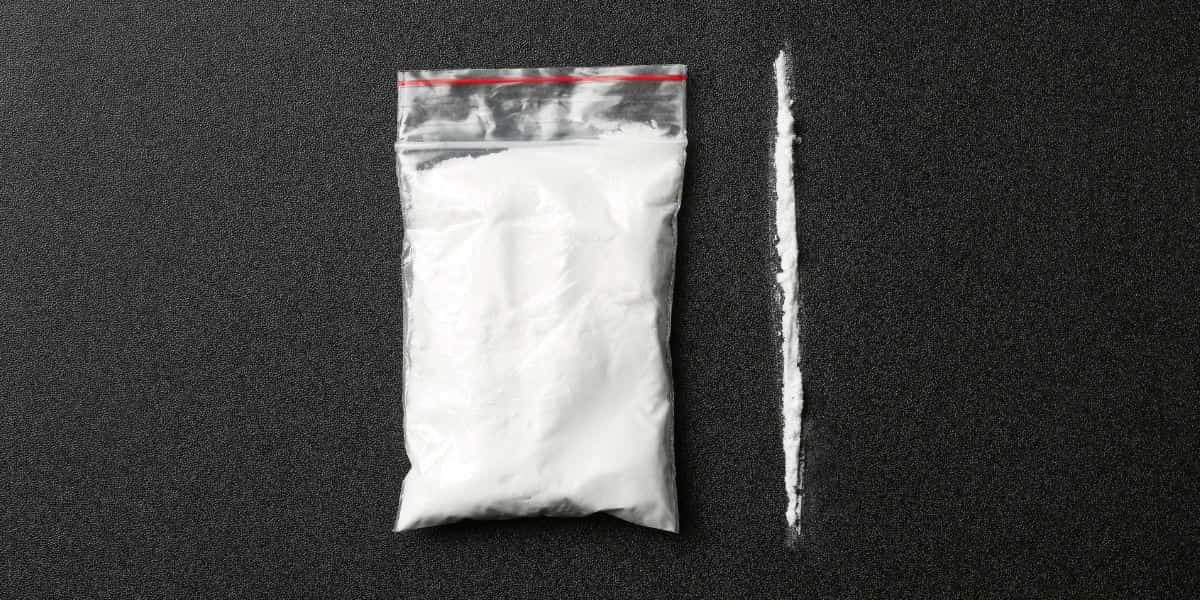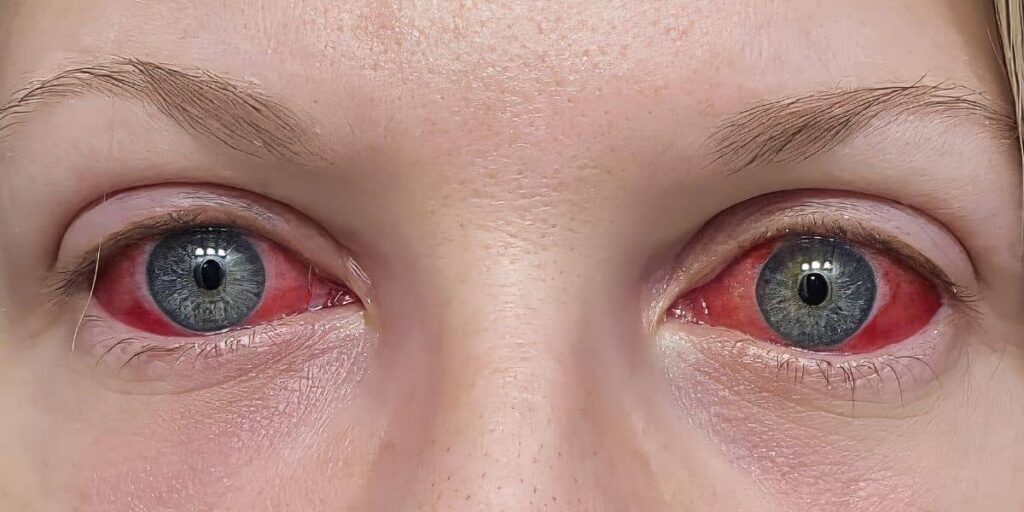Cocaine Eyes: How Does Cocaine Affect Eyes?


Medical Writer:
Reviewer:

Johnny Kim
Executive Psychotherapist
Medical Writer:
Reviewer:

Johnny Kim
Executive Psychotherapist
Cocaine is a powerful stimulant that has profound effects on various parts of the body, including the eyes. Many people know that cocaine addiction is dangerous, but not as many know how it can harm the eyes. Understanding how cocaine affects the eyes can help you understand the bigger picture of cocaine use and addiction.
Table of Contents
ToggleWhat Are Cocaine Eyes?
Cocaine eyes refer to a variety of eye-related symptoms and conditions that result from the use of cocaine. These symptoms can start shortly after cocaine use and can persist or worsen with long-term abuse. Cocaine is a stimulant that affects the central nervous system (CNS) and can cause changes in the eyes. This happens because cocaine stimulates the sympathetic nervous system, which controls when your pupils dilate.
Cocaine Pupils
Cocaine can cause pupil dilation, also known as “cocaine pupils.” When someone uses cocaine, their pupils can get bigger, making their eyes more sensitive to light.
Bloodshot Eyes
Cocaine use can also lead to bloodshot eyes because cocaine increases blood pressure.
This causes the blood vessels in the eyes to become larger and more visible, making them appear red and bloodshot. When blood vessels constrict and dilate, they can cause dryness and irritation, making the eyes appear bloodshot.
Cocaine Conjunctivitis
Cocaine conjunctivitis is another condition that can arise from cocaine use. This is when the thin membrane covering the front of the eye and inner eyelids gets inflamed. This inflammation can cause redness, irritation, and discomfort, making the eyes appear swollen and bloodshot.

Signs and Symptoms of Cocaine Eyes
The following are signs and symptoms of cocaine eyes that can help in identifying cocaine use and taking appropriate action:
Dilated Pupils and Sensitivity to Light: A hallmark sign of cocaine use is dilated pupils. This can make the eyes particularly sensitive to light, causing discomfort in brightly lit environments. Cocaine users often need to wear sunglasses indoors to manage this sensitivity.
Bloodshot Eyes and Irritation: The bloodshot appearance of the eyes is another clear sign of cocaine use. This is often accompanied by irritation, dryness, and a burning sensation. These symptoms are uncomfortable and easy to see. Recognizing these signs can aid in identifying someone who may be using cocaine.
Retracting of the Upper Eyelid: Cocaine use can make the upper eyelid pull back, making the eyes look wider or bulging. Cocaine makes the muscles controlling the eyelids retract, making the eyes look wide and startled.
Corneal Ulcers and Infections: Long-term cocaine use can lead to more severe eye conditions such as corneal ulcers. These are open sores on the cornea, the clear front surface of the eye, which can become infected. Smoking cocaine can introduce harmful bacteria and irritants to the eyes. This can increase the risk of infections and ulcers.
Bulging or Protruding Eyes: In some cases, cocaine use can cause the eyes to bulge or protrude. This happens when there is more pressure behind the eyes, usually caused by high blood pressure and changes from cocaine. This bulging can be uncomfortable and may also affect vision.
Side Effects of Cocaine Addiction
Cocaine addiction has harmful effects on the body, causing health risks and long-term problems beyond just the eyes, including:
Cardiovascular Issues
Cocaine impacts cardiovascular health by increasing heart rate and blood pressure. This can lead to severe conditions such as heart attacks, strokes, and other cardiovascular diseases. The increased blood pressure also affects the delicate blood vessels in the eyes, contributing to the eye symptoms discussed earlier.
Neurological Effects
Cocaine is a powerful stimulant that affects the brain and nervous system. It can cause seizures, headaches, and even long-term cognitive deficits. The neurological effects of cocaine also play a role in eye symptoms, as the drug interferes with the normal functioning of the nervous system controlling eye movement.
Psychological Impact
Cocaine addiction can lead to severe psychological issues, including anxiety, paranoia, and hallucinations. These mental health challenges can further exacerbate the physical symptoms, including those affecting the eyes. For example, hallucinations can lead to self-inflicted eye injuries or excessive rubbing, worsening the condition of the eyes.
Respiratory Problems
Smoking cocaine, often in the form of crack, can cause significant respiratory problems. The smoke irritates the respiratory tract, leading to chronic cough, lung infections, and other respiratory issues. Smoke can irritate the eyes, causing dryness and more irritation to the eye surfaces.

Cocaine Addiction Treatment at White Oak Recovery Center (WORC)
If you or a loved one is struggling with cocaine addiction, seeking professional help is essential. White Oak Recovery Center offers comprehensive treatment programs tailored to your needs of battling substance abuse. These programs provide evidence-based therapies and ongoing support to help you recover and rebuild your life.
WORC offers evidence-based treatments, such as medical detox and medication-assisted treatment for physical withdrawal symptoms. Continued support after treatment is given to assist in maintaining sobriety and making positive life changes.
To avoid eye problems from using cocaine, focus on overcoming addiction and taking steps to keep your eyes healthy. Regular eye exams can help detect and manage any eye conditions early. If you have used cocaine for long periods of time, eye care specialists can provide treatments to manage symptoms such as dryness, irritation, and infections.
Medical Detox
The first step in treating cocaine addiction is medical detox. This process involves safely removing cocaine from the body under medical supervision. During detox, healthcare professionals manage withdrawal symptoms and ensure the safety and comfort of the individual. This is especially important for cocaine users who may experience severe withdrawal symptoms, including depression, fatigue, and intense cravings.
Therapy and Counseling
Therapy is a critical component of cocaine addiction treatment. At WORC, residents get personalized therapy and counseling to tackle the root causes of their addiction. One option is cognitive-behavioral therapy (CBT). CBT can help you identify and change negative thoughts and behaviors related to your substance use.
Group therapy provides a supportive environment where you can share your experiences and learn from others facing similar challenges. Family counseling helps fix relationships affected by addiction, creating a supportive household for recovery.
Holistic Approaches
In addition to traditional therapies, White Oak Recovery Center offers recreational, holistic approaches to treatment. Some options to consider are yoga, meditation, and art therapy. These activities can help you reduce stress, learn new coping methods, and improve your overall well-being. Holistic treatments address the mind, body, and spirit, providing a well-rounded approach to recovery.
Ongoing Support
Recovery from a substance use disorder is a long-term process. White Oak Recovery Center provides ongoing support to help residents maintain their sobriety. This includes follow-up counseling, support groups, and resources to help you stay on track with your recovery goals. WORC’s alumni program helps residents who have finished treatment by giving support and resources to prevent returning to old habits.
Cocaine addiction has severe and far-reaching effects on the body, in addition to significant impacts on the eyes. Understanding these effects can help in recognizing the signs of cocaine use and taking appropriate steps to seek cocaine addiction treatment.
White Oak Recovery Center can assist you in your recovery journey. We provide the support and resources necessary for you to overcome your addiction and lead a healthier life. Our team dedicates themselves to helping you achieve long-term recovery and a drug-free lifestyle.
Contact us today and speak with one of our compassionate treatment specialists. Let us help you live a life rooted in recovery.

Am I covered for addiction treatment?
Your insurance may cover treatment. Call now for an entirely free and confidential assessment. Recovery starts with a phone call.

- Anand, Jacek Sein, et al., “Visual Impairment Caused by Recreational Usage of Cocaine – A Case Report.” Przegl Lek., 2010.
- Keki-Kovacs, Klaudia, et al., “Cocaine Eye Syndrome.” Orv. Hetil., Nov. 2022.
- Iannetti, Ludivico, et al., “Cocaine Abuse as an Immunological Trigger in a Case Diagnosed with Eales Disease.” Medicina (Kaunas), Jan. 2023.
- Mantelli, Flavio, et al., “Cocaine Snorting May Induce Ocular Surface Damage Through Corneal Sensitivity Impairment.” Graefes Arch Clin Exp Ophthalmol., May 2015.
- Demer, J.L., et al., “Eye Movements in Cocaine Abusers.” Psychiatry Res., Aug. 1989.
Medical Disclaimer:







